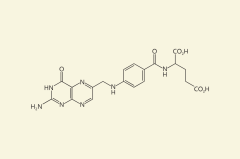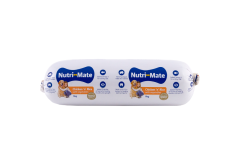Along with vitamins B12 and B6, folic acid is a major regulator of the DNA methylation processes in the body. Food sources include green leafy vegetables (folate is derived from the Latin for foliage), chickpeas, liver, fortified breads and cereals, and brewer’s yeast. Folate deficiency is considered one of the most common vitamin deficiencies in humans. Studies have also shown that a zinc deficiency can reduce the body’s efficiency in metabolising folate, as well as cause lower plasma folate and decreased folate in the liver.
In the 1960s, the discovery was made that folic acid was important in the prevention of neural tube defects in babies. In the ‘70s and ‘80s, it was shown to be a critical nutrient in the prevention of cervical dysplasia. Following this was the discovery that folic acid was essential for preventing atherosclerosis associated with increased homocysteine. Since then, a deficiency has also been linked to an increased risk of various cancers, including colorectal cancer.
Therapeutic uses
Pregnancy & neural tube defects
Folic acid is important because supplementation around the time of conception has been shown to lower the risk of babies being born with a neural tube defect such as spina bifida. This is an increasing issue with multiple births.
Hypomethylation & hypermethylation
Methylation is a critical metabolic process that occurs mainly in the liver and the gut. It involves modification of DNA in the regulation of gene expression. Undermethylation can result in increased inflammation and sensitivity to carcinogens, resulting in the tumour initiation process. Hypermethylation, on the other hand, can result in the suppression of the activity of tumour suppressor genes, thus increasing the progression of cancers. Bioavailable forms of folate may better support methylation metabolism.
Defects in the methylation process can occur from deficiency but also from a genetic abnormality of the methylenetetrahydrofolate reductase gene (MTHFR), leading to high homocysteine levels, which are in turn implicated in vascular thromboembolism, coronary artery disease (atherosclerosis), cataracts and cancer initiation (ie colorectal cancer).
Two large research cohort studies were conducted on 72,348 women in 1990–2010 and 44,504 men in 1986–2010. Plasma homocysteine and the link between diet and risk of peripheral artery disease (PAD) was examined. High homocysteine and low folic acid levels were associated, and dietary folate intake was inversely linked with risk of PAD in men but not in women.
Another study showed that elevated homocysteine levels were





